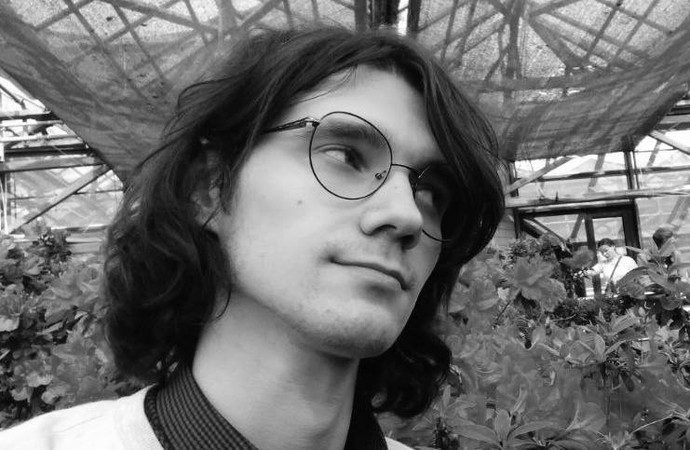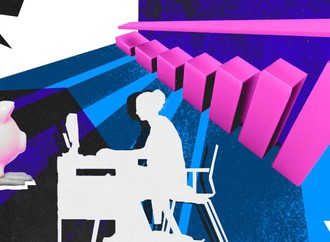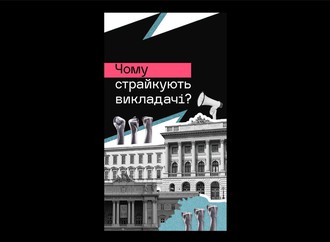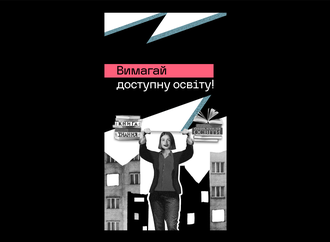South African student movement #FeesMustFall stopped the increase of the educational fees, forced the government to increase the educational subsidies and expand the financial aid programs for the poor and also brought a new generation of leaders into politics. At the first glance, this is a classical heroic story of the victory of the betrodden over the rulers; just a kind of story that we need currently in Ukraine – a country where the construction of the neoliberal (anti)utopia did not stop even despite the war. However the historical contexts are very different: we consider the British model to be a progressive innovation, while for RSA it is a heritage of apartheid regime; in our context political parties do not fight for the student parliaments, while there every respected political force has its own youth student wing. Finally, despite the full blown crisis of trust towards the institutions, Ukrainian political reality is defined by the full scale war, and not the ‘usual’ economic and social problems of the country in the periphery.
Thus the relevance of the movement #FeesMustFall lies not in the fact that the political reversal away from the curtailment of the social infrastructure is possible – if only there are protests in the streets. What is really significant about this situation is the fact that national mobilization was preceded by long years of struggle at the level of universities, organization of the new political forces and stern radicalism. Although the protests were mostly peaceful, strikes, building closures and night-time battles with the police left their mark on South African university communities. In other words, this is also a story about victims and actions that may not seem acceptable to everyone. And also a story about the search for a compromise and the ability to find political solutions for the stability of democratic institutions in a young country full of class and racial contradictions.
For me – a student activist and future educator – this text is not just an attempt to examine the ‘success story’ in search for the effective strategies. This is also an attempt to outline a successful student movement that can help replace the period of resistance to the anti-social educational reforms by the period of the advancement of the progressive alternatives. That is why this text focuses on the student politics, protests and higher education in RSA. In particular, I decided to omit the Rhodes Must Fall movement – another powerful South African student movement against the heritage of the colonialism that was developing concurrently. Despite one’s wishes, it is difficult to encompass all intricacies of the contemporary culture of the country located thousands of kilometers away from here. Thus here I will dwell on the reasons of emergence of the #FeesMustFall movement, the history of the protests and their consequences for the RSA’s higher education.
South African context: politics, universities and crises
Since 1994, from the time when apartheid regime fell, and until today the country is ruled by the African National Congress (ANC) – a party that is a broad alliance of different groups that fought against the regime of racial segregation. In a coalition with the Communist Party and the Congress of Trade Unions, ANC officially proclaimed the course towards national democratic revolution: policy of fight against the social, economic, and cultural consequences of the regime, directed at the establishment of true racial equality. ANC has its own youth league (ANSYL), as well as the support the most influential student alliance, South African Student Congress (SASCO) that officially positions itself as a socialist organization[1].
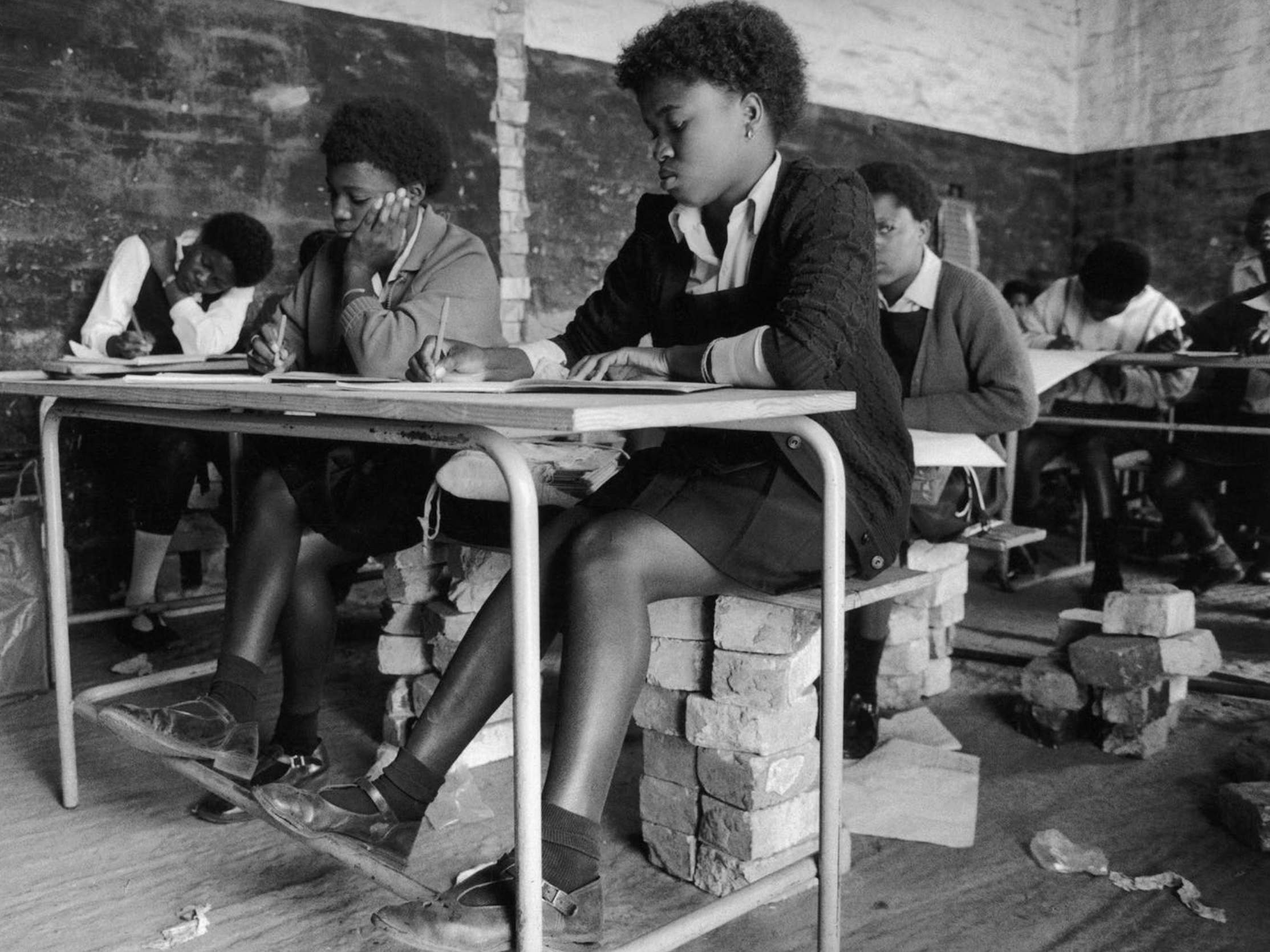
Educational process in Southern African Republic. Picture: Getty Images
After the apartheid, the new elites were left with a system of state universities, which had full autonomy in financial matters and in the educational and scientific process. This means that universities are supported by government subsidies, but are free to set tuition prices and can run their own entrance exams. Each university has its own student representative council — an advisory body under the administration, where students elect their representatives[2].
SAR’s university system is considered to be the best on the entire continent, but it was created back when black Africans were allowed to enroll only in certain universities. When Mandela’s government revoked the restrictions on admissions, the number of students increased rapidly – while in 1994 their number was approximately 420 thousand, in 2014 it approached one million.
However, state scholarship programs for poor families and educational subsidies did not cover either students’ or universities’ spendings that continued to rise expotentially. As Adam Habib, who was Vice Chancellor at the University of the Witwatersrand at the time of the protests, writes in his book Rebels and Rage: Reflecting on #FeesMustFall: although the government created the National Student Aid Scheme (NSFAS) and expanded it several times, still only students whose annual income was less than 122,000 rand were eligible for financial aid. Those whose families earned more had to accumulate debt. Habib writes about them[3]:
“Students in this category had to rely on student loans from banks and other financial institutions, and their parents and/or families had to put up assets to access such loans. This created much distress, not only among the poor, but also within the working and middle classes”.
At the same time, the issue of access to higher education was constantly discussed at party conferences of the ANC — politicians of the ruling party made many promises, forgetting about them in government offices. This is what Habib has to say about disingenuous politicians:
“[they were] talking about realism, fiscal prudence and measuredness in their government capacities. The net effect was a crisis of expectations that began to build across society – and, in particular, among ‘missing middle’ students in the university system”.
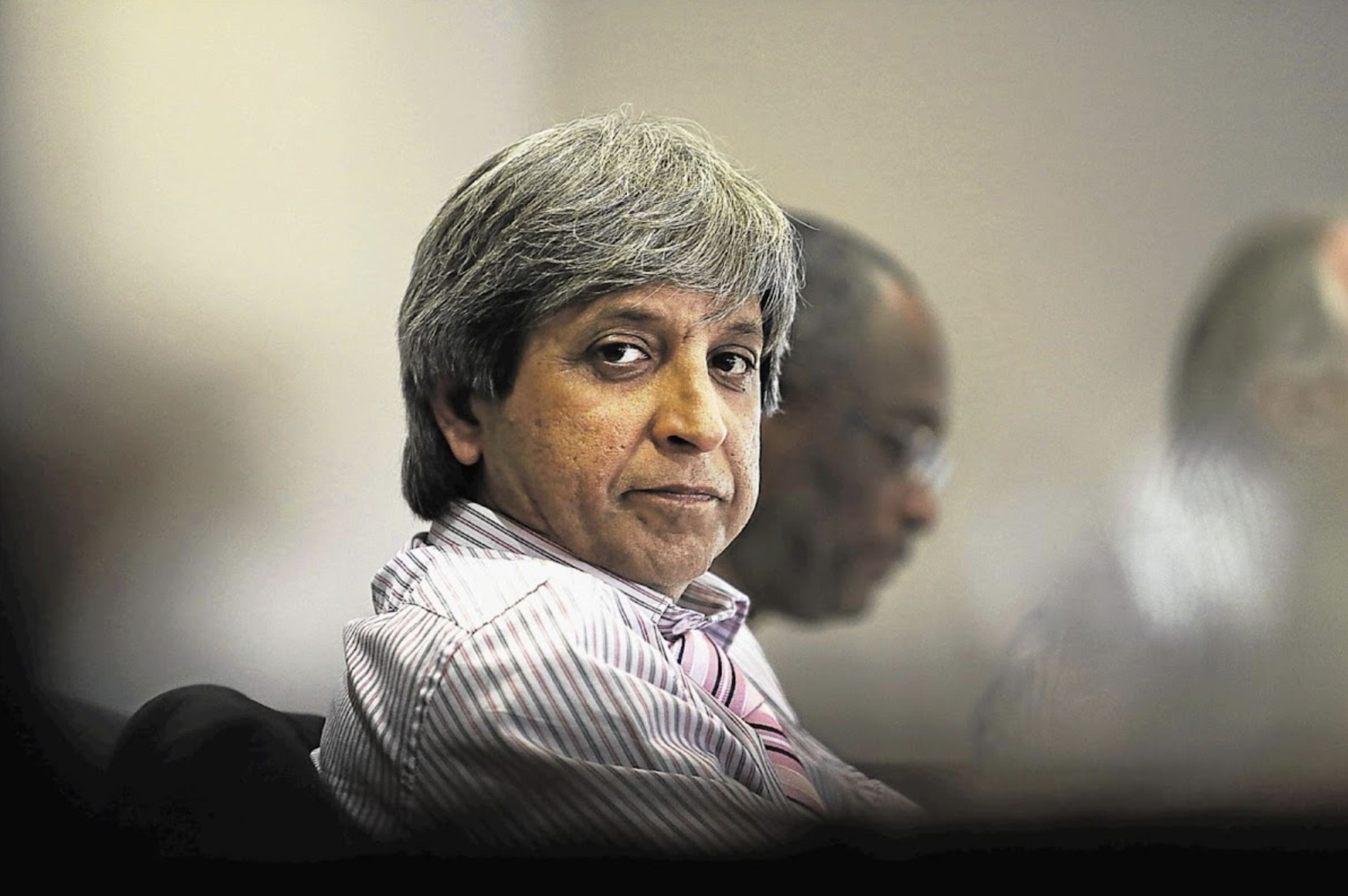
Vice Chancellor Adam Habib. Picture: Getty Images
Protests against tuition fee increases took place even before 2015, but at the local level and in poorer, less prestigious universities. However, over time, because of the economic crisis, falling incomes and rising unemployment have also affected the better-off students from the country's most prestigious and large universities. It is considered that that the #FeesMustFall student movement reached a national scale due to the economic crisis.
Against the backdrop of the economic crisis, a general radicalization of the political discourse took place, in particular due to the emergence of new, more oppositional political forces. Back in 2012, a group broke away from the ANC, disappointed with the party's moderate course, and created the left-wing radical party the Economic Freedom Fighters (EFF). Later, this party formed its student wing (EFF Students Command), which quickly became a powerful competitor in the elections to student councils, where the competition was traditionally between SASCO and the Democratic Alliance Student Organization (DASO). The latter was the student wing of the Democratic Alliance, a moderate liberal party, oppositional to the ANC, whose main electorate is the "middle class", Afrikaners, descendants of former white settlers. The newly formed EFF is known for its harsh criticism of the government and its radical demands: in particular, it demands the expropriation of white farmers' land without compensation and advocates universally accessible higher education. The party uses a military aesthetic and is often accused of tolerating street violence and organizing clashes during protests.
In other words, student life in South Africa is closely intertwined with political life. Political parties form their new political generation and recruit volunteers for campaigning in student organizations. Most of the major political and student movements were organized during the apartheid era (in particular the "white" DASO) and the tradition of the "national democratic revolution" still defines the rhetoric of African politicians. The status of a revolutionary movement whose great mission is to make the Republic truly a country of equal rights and opportunities is what ensured the ANC's absolute dominance and political authority.
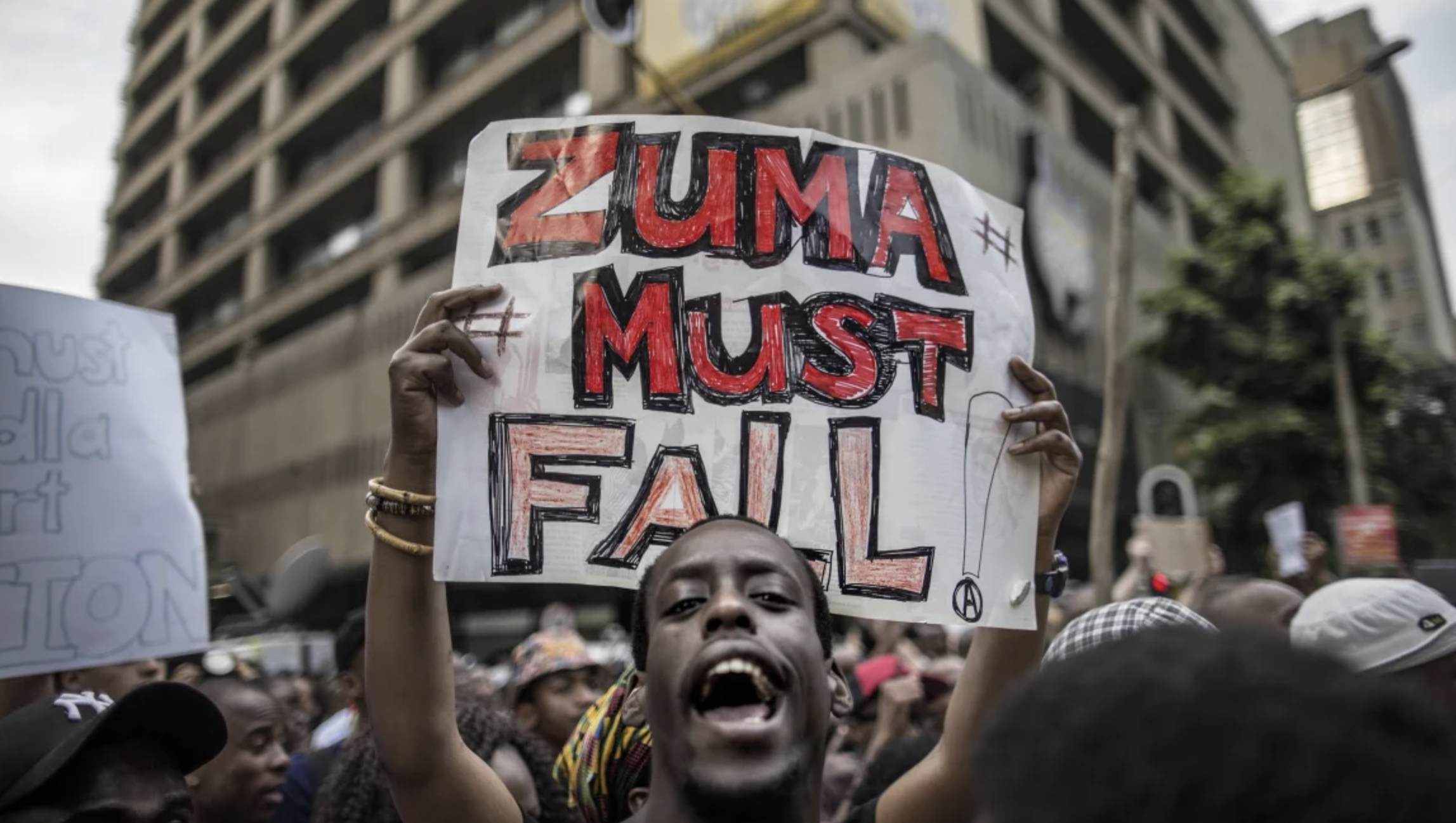
A student holds a placard reading 'Zuma must fall' outside the ANC headquarters during a demonstration by thousands of students against increase in tuition fees on October 22, 2015 in Johannesburg. Picture: MARCO LONGARI / AFP / Getty Images
But, despite all the "revolutionary" agenda, the ruling party followed a moderate course, postponing solutions to a significant part of the problems, claiming that they are not timely. The inability to solve chronic problems, as well as corruption scandals, exacerbated the crisis of confidence in the ANC and its affiliated organizations, and this led to the emergence of new political actors. Many representatives of the previous generation of activists became pedagogues or took up leadership positions in administrations. Some of them tried to achieve an increase in education funding through dialogue with the authorities, but the students eventually got tired of waiting for the victory of the old revolution - and decided to start a revolution of their own.
#FeesMustFall: from a peaceful sit-in to beating of university guards
On 14 October 2015, the management of the University of the Witwatersrand announced that the tuition fee would increase by 10.5%. According to the finance director of the university, this step was required by inflation (6% in general and 8% in the education sector), the need to raise salaries for lecturers and researchers, and the rise in prices for utility services, foreign equipment and literature. However, the decision outraged the students, who, with the support of the leaders of the local student council, began to rally on the campus. A spontaneous protest turned into a sit-down strike. Three days later, on October 17, after lengthy negotiations, the university management suspended the fee increase.
While negotiations were underway at Wits, protests spread to other institutions of higher education. On October 19, at the University of Cape Town, where a similar increase in tuition fees was announced, students occupied the administrative building. However, if at Wits the administration immediately started a dialogue, the management of other higher education institutions turned for help to the police, who brutally dispersed the protesters. This led to the first round of escalation - blockades and occupations of university buildings began on a nationwide scale, and student protests spilled into the streets near police stations where arrested protesters were being held. On October 21, about 5,000 students broke through the police cordon near the parliament building, where a meeting on budget issues was taking place. Education Minister Blade Nzimande tried to calm the crowd but was booed, while South African President Jacob Zuma and other government officials fled the building through an emergency exit. On October 22-23, there was another surge of violence: during protests at the University of Fort Hare, the offices of the local security service were vandalized.

South African Minister of Education Blade Nzimande. Picture: open sources
Against the backdrop of mass clashes, the management of universities as well as the heads of student organizations held regular meetings with the political leadership of RSA, convincing them of the need to increase funding for higher education. In the end, as a result of these meetings, the government guaranteed that it would allocate additional funds to cover inflation and will not raise tuition fees. A commission was created to work on creating free higher education and finding sources of funding.
Protests flared up with renewed vigor in August 2016, when the same Higher Education Council recommended that the government increase the price of tuition due to the risk of "financial instability". On August 20, students from Walter Sisulu university block the N2 highway, which ends in large-scale clashes with the police. In September, the situation worsened: at the University of KwaZulu-Natal, protesters accused the police of raping a female student and burned the university library.
In the end, the Minister of Education announced that tuition fees would increase, but not beyond 8%, and that the final decision would be made by university administrations. The statement only radicalized the protesters, who were already outraged by police brutality. In particular, Shaeera Kalla, one of the most famous activists of the movement, was seriously injured by rubber bullets during one of the protests. In various higher education institutions, students tried to take over buildings, disrupted studies, and caused chaos in the streets. In October of the same year, during one of the protests, two security guards of the University of Cape Town were brutally beaten with iron rods.
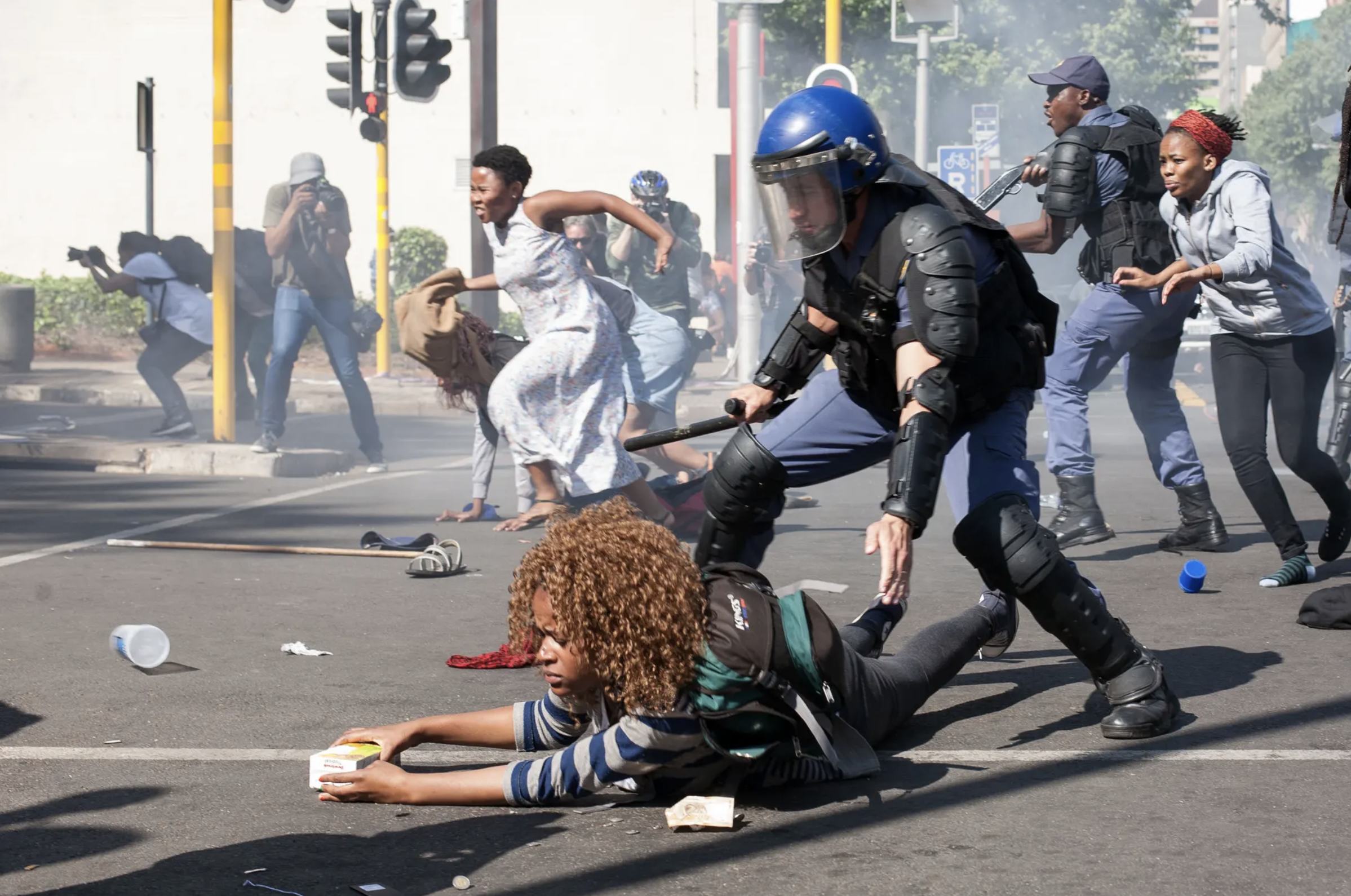
Students at the University of the Witwatersrand flee from police who fire rubber bullets and stun grenades. Picture: Greg Nicolson / The Daily Maverick
Subsequently, the leadership of the major student organizations actively supporting the movement, called on the students to calm down. After this the protests eventually stopped. The police and the administration took the security situation under control. As Janet Cherry, a South African activist and researcher, notes, the students themselves faced a difficult choice: either to complete their studies under such conditions, or to find themselves in an even more difficult financial situation. In other words, the protestors were running out of money and could no longer put off work to be able to pay for education; or they had to return home for the holidays to avoid paying for the residences. In addition, due to the protests, the academic load has increased dramatically.
The aftermath of the #FeesMustFall protests: more funding, educational losses and the crisis of 'traditional' student unions
Overall, student protests achieved partial success: in 2015, the government froze higher education fee increases, and in 2016 fee increases were capped at a level lower than university administrations wanted. According to Adam Habib, in 10 days the protesters achieved what the university councils could not do in several years - the government significantly increased educational subsidies and scholarship programs for students from poor families. Thanks to the #FeesMustFall movement, talk of the "financial impracticality" of expanding free education has become a thing of the past. Instead, the question arose: why did South Africa, the richest country in Africa, allocate only 0.75% of its GDP to higher education, while the party of the "national democratic revolution" is in no hurry to change the situation for the better and regularly gets involved in corruption scandals.
At the same time, the protests had a negative impact on the educational process and the quality of education. Universities suffered severe financial losses and had to rebuild damaged infrastructure while maintaining curriculum standards. According to surveys conducted as part of the research about the learning experience of first-year students during the protests, many students faced significant physical and psychological discomfort[4]. Free movement within the university buildings was restricted, and the schedule of classes became very unstable. Since the educational process was suspended for a certain time, many students had to prepare for exams on their own, and after the process resumed, lecturers tried to catch up quickly with the educational program, increasing the workload. Although many first-year students supported the demands of the movement, they still continued their studies and were psychologically traumatized and sometimes frightened by the actions of the protesters, who disrupted classes and threatened lecturers. According to the national and international rankings (despite all the limitations of such indicators), during the protests South African universities have significantly dropped in their positions.
It is important to add that despite all the radicalism, the #FeesMustFall movement did not lead to a revolution in the structure of relations at the university itself - partly because the protest was led by the leaders of the student government. Although the protesters used radical rhetoric, often forced representatives of the administration to sit on the floor (or even kneel) and broke into meetings of the governing councils, the power of the student bodies remained advisory. Representatives of the administrations, who also considered themselves victims of the government's policy, reacted extremely negatively to the denial of their authority. However, this does not mean that communication between the management of higher education institutions and students has not changed. The protests have shown the administration of many universities that close communication can keep the situation under control and prevent escalation, which sometimes leads to violence.
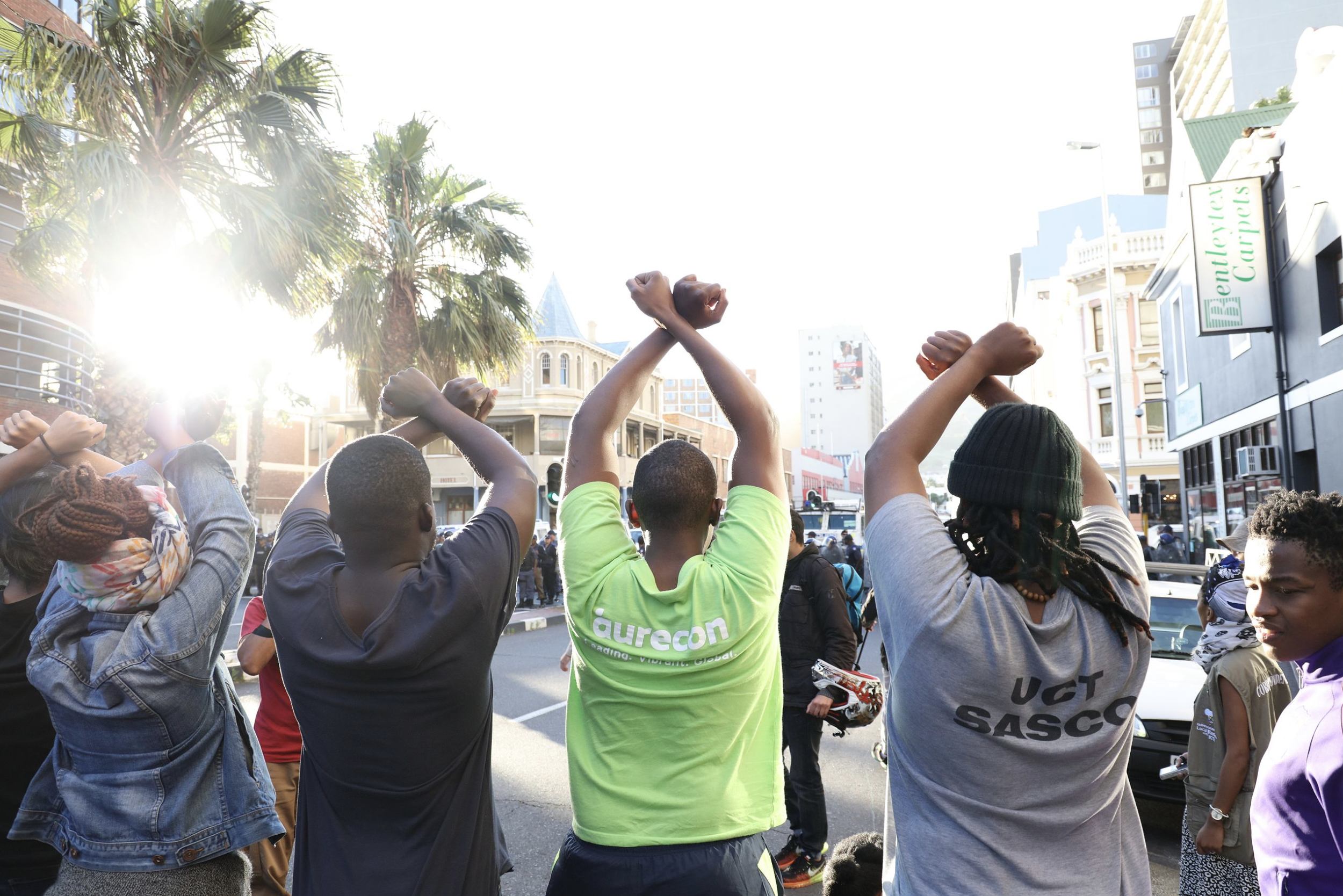
A group of students raise their hands to signal that they have come in peace, RSA, October 2015. Picture: Wikimedia
A secondary but important consequence of the protests was the decline in popularity of the ANC and traditional student organizations and appearance of new faces in politics. A number of prominent #FeesMustFall student activists will later participate in the 2019 election, running for the Economic Freedom Fighters party. In the same year, the student wing of this political force won student elections in many major universities.
Implications of #FeesMustFall and lessons for student activists
Several important factors should be considered when talking about the success of #FeesMustFall.
First, the protests were preceded by decades of organized student activism, as well as the experience of local protests in 2008-2015. South African student organizations play an active role in political life, participate in party competition, and are independent of university administrations. Because of this, the issue of free higher education has always remained politically important in South Africa. This is in sharp contrast to the situation we observe in Ukraine, where universities are maximally depoliticized and cut off from general political competition, and student unions are only additional economic bodies under the administration.
Secondly, the support of lecturers and members of the university councils, who backed the demands of the protesters, played an important role in the success of the protests. Being mainly representatives of a generation that fought against inequality during their student years, they lobbied for the students' demands during meetings and negotiations with the government, and intervened when students were victims of police violence. Although in fact the protests only prevented the lecturers from doing their work. This is an important point: despite all the hierarchical relations in the university, generational differences and the specificity of problems, solidarity between teachers and students is not only possible, but also very useful.
The educational losses suffered by South African universities due to the escalation of violence and the suspension of the educational process were among the painful consequences of #FeesMustFall. Although the threat of destabilization prompted the government to make concessions, the violence brought the protest to an impasse. Radical, revolutionary demands to ensure entirely free education collided with a reality in which the majority of students could no longer physically afford to continue protesting. Like any direct action, blocking universities and disrupting classes comes at a price – not just the threat of going to jail, but also unstable academic schedules, increased workload during the session, and the inability to access the library or labs. Saying nothing of the work – combining it with strikes turned out to be a separate challenge.
In this context, activists who are romancing the idea of such mass protests should soberly assess the situation. For all their potential, students are not an army of knights, with stable funding, iron discipline, a constant flow of resources and training, allowing them to lay siege to university fortresses for several months. Those who go to the protests are ordinary people, with their own weaknesses and shortcomings, who can storm the parliament today and just ignore the protests in the square in front of the university tomorrow. That is why it is so important to build horizontal connections, accumulate political experience and interact with sympathetic agents in various institutions. Such networks of solidarity enable progress, consolidate the achievements, and prevent losses and damage caused by the course of protests from being futile.
Footnotes
- ^ Thuynsma, Heather, ed. (2017). Political Parties in South Africa - Do They Undermine or Underpin Democracy?. Africa Institute of South Africa. ISBN 978-0-7983-0514-3.
- ^ Barnes, Teresa Ann, Narend Baijnath, and Kalawathie Sattar. The restructuring of South African higher education: Rocky roads from policy formulation to institutional mergers, 2001-2005. Unisa Press, 2009.
- ^ Habib, Adam. Rebels and rage: Reflecting on# FeesMustFall. Jonathan Ball Publishers, 2019.
- ^ Greeff, M., et al. "The# FeesMustFall protests in South Africa: Exploring first-year students’ experiences at a peri-urban university campus." South African Journal of Higher Education 35.4 (2021): 78-103.

